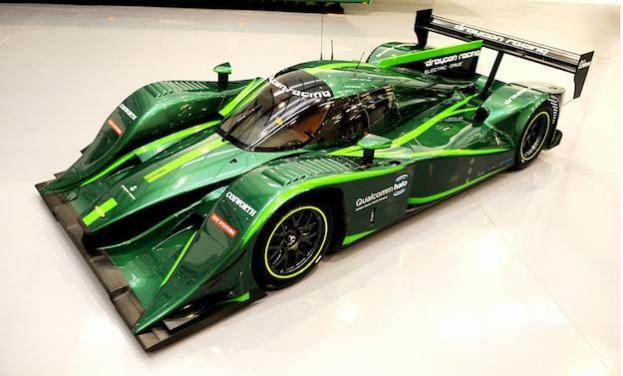 While you might associate land speed records with the sound of roaring, thundering engines, the latest one, set by a team in the UK, was a positively peaceful affair.
While you might associate land speed records with the sound of roaring, thundering engines, the latest one, set by a team in the UK, was a positively peaceful affair.
It’s easily explained though, as Drayson Racing Technologies’ vehicle, which hurtled silently into the record books on Tuesday, is an electric car.
The Drayson B12 69/EV, which was converted from a Lola LMP1 Le Mans racer, reached a top speed of 204.2mph (328.6km/h) at a racetrack in Yorkshire, England, achieving a new land speed record for a vehicle in the sub-1,000 kilogram (2,200 pound) class. The previous record was 175mph (281kmh), set by the General Electric Battery Box in the US back in 1974.
Behind the wheel of the record-breaking EV was the boss of the company, Lord Drayson, who’s planning to enter the car in the 2014’s Le Mans 24 race in France. The self-declared petrolhead car nut said the race could function as “a challenging test bed” for technologies that could in the future make their way into regular road vehicles.
Speaking before Tuesday’s drive, Drayson said, “It’s a tremendous technical challenge but we believe it’s about time someone moved this record on to demonstrate just how far EV technology has come.”
Modifications to the Lola include the replacement of its bio-fuel Judd V10 with four electric motors. Powering these is a 20-kWh battery pack offering 850 horsepower, fitted inside a special cell which is part of the chassis. To minimize air friction, the chassis has been made with recycled carbon fiber.
The Drayson B12 69/EV can go from 0-60 mph in 3 seconds, and 0 to 100 in 5.1 seconds. In virtual silence.
While Drayson’s vehicle took the speed record for the sub-1,000 kilogram class, there is another EV that has traveled even faster – the Buckeye Bullet. The joint project of Ohio State University and Venturi, the sleek VBB-2.5 model of the Bullet set a new FIA-recognized record in 2010 when it powered its way to 307.58 mph.
Check out the video below to see the Drayson EV being put through its paces recently.
[via BBC]


